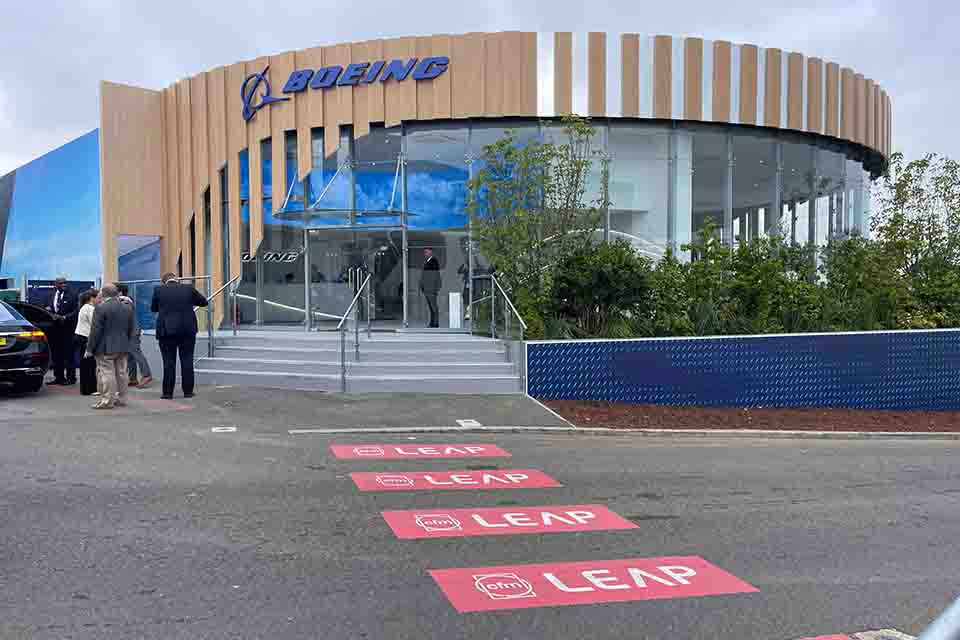Aviation
Why Boeing Prefers Hiring 20 Times More Engineers in India Over China

Boeing, the aerospace giant, is undergoing a notable shift in its hiring strategy, focusing heavily on recruiting engineering talent in India while reducing its reliance on China.
According to a report by SCMP on August 1, Boeing is hiring nearly 20 times more engineers in India compared to China, signaling a significant strategic pivot.
The SCMP report highlights that as of a recent Wednesday, Boeing’s Careers site listed only five job openings in China, with three being engineering positions. In stark contrast, India had 83 job openings, including 58 engineering roles. This disparity in job postings has been consistent for several weeks, according to the report.
Why the Boeing 777X Is Facing Delays: B777X vs. A350 certification:Click here
Currently, Boeing employs about 2,200 people in China and over 6,000 in India, despite India’s commercial aviation fleet being roughly one-sixth the size of China’s. Several factors contribute to Boeing’s increased focus on India.
Firstly, many leading US companies are viewing India as an emerging hub for diversifying manufacturing operations away from China. Recent comments from a senior US official about prioritizing Indian students for STEM fields underscore a broader strategy of leveraging India’s scientific talent alongside its manufacturing capabilities.
Boeing’s strategic shift is also driven by market dynamics. China has shown a growing preference for Airbus over Boeing for new fleet acquisitions, compelling Boeing to seek growth opportunities elsewhere. India, with its burgeoning pool of engineering talent and rapidly expanding aviation market, presents an attractive alternative.
What will happen to Air India employees after privatization?:Click here
Currently, India ranks as the world’s third-largest domestic airline market, behind only the US and China, and is projected to require 2,835 aircraft deliveries by 2043. The broader context of US-India relations also plays a crucial role. “India and the US are collaborating extensively on defense and technology, along with many other areas, including aerospace,” said an expert in the SCMP report.
Boeing’s increased involvement in India aligns with this collaborative trend. Notably, Airbus is also expanding its presence in India, further solidifying the country’s role as a key player in the aerospace sector.
Aircraft comparisons between the C919 and B737 max 8:Click here

Aviation
Airbus Enhances A350 Cabin with 10-Abreast Seating

Airbus has announced a new partnership with Jiatai Aircraft Equipment, a Chinese aircraft seating manufacturer, to supply upgraded economy-class seats for the A350 widebody series.
This collaboration, unveiled at the 2024 Airshow China, focuses on developing a newly designed economy seat tailored for the A350‘s New Production Standard (NPS) cabin.
One of the key features of the NPS cabin is the ability to accommodate 17-inch wide economy seats, compared to the previous 16.5-inch wide seats that airlines were limited to in the A350’s earlier configurations.
British Airways Unveils Its Brand-New First Class Cabin for the Airbus A380
This change is made possible by the expanded space in the NPS cabin, which is 35 inches longer and 4 inches wider than the previous version. This extra space is achieved by slightly moving the cockpit wall forward and shifting the rear pressure bulkhead back by one frame.
The wider cabin allows airlines to add up to 30 extra economy seats without compromising comfort. For airlines opting for a 3-4-3 seating layout, the 17-inch wide seats are an excellent choice for a more comfortable passenger experience. However, some airlines, such as Iberia, may choose to retain a 9-abreast layout with wider seats for added comfort.
The NPS cabin also offers enhanced flexibility for airline operators. One major advantage is the ability to easily switch between a 9-abreast and 10-abreast seating configuration without requiring significant downtime for aircraft reconfiguration. Airlines can use the same seat rails, tracks, and IFE interfaces, making the transition smoother and quicker.
Etihad Airways Unveils 10 Exciting New Routes for 2025
In addition, the design of the floor attachments and air-conditioning systems has been optimized for 10-abreast seating, meaning airlines can upgrade their cabins without needing to make substantial modifications to the aircraft’s structure.
Though it’s still unclear when Jiatai’s economy-class seats will be officially added to the A350’s Buyer Furnished Equipment (BFE) catalogue, the collaboration marks a significant step toward enhancing the A350’s cabin offerings.
With this partnership, Airbus is providing more seating options for airlines, ensuring that they can meet diverse customer needs while improving overall operational efficiency.
-

 Aviation2 months ago
Aviation2 months agoMicrosoft Flight Simulator Raises $3 Million to Bring Back the An-225 Mriya
-

 Airlines2 months ago
Airlines2 months agoQatar Citizens Can Travel to the United States Without a Visa
-

 Aviation2 months ago
Aviation2 months agoQatar Airways bans these new Electronic Devices on plane
-

 Airlines2 months ago
Airlines2 months agoJapan Airlines Rolls Out Free Domestic Flights to International Passengers
-

 Defence2 months ago
Defence2 months agoWhich Country Has the Largest Fleet of Fighter Aircraft?
-

 Airport2 months ago
Airport2 months agoWestern Sydney Airport Welcomes Its First Plane After 6 Years of construction
-

 Airlines4 days ago
Airlines4 days agoDAMAC Air: Dubai’s New Luxury Airline Offers Free Flights for Registration
-

 Aviation2 months ago
Aviation2 months agoDid you know ? Once Boeing 747 carried 1088 passenger in 1991








